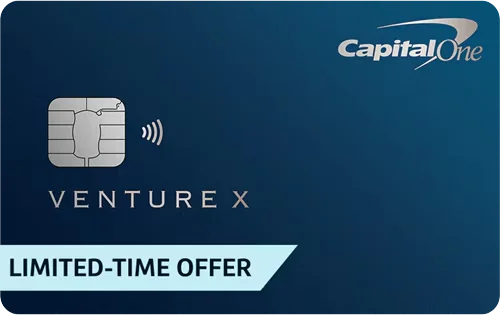Earning a card’s welcome offer is one of the easiest ways to collect a ton of points fast.
We’re talking tens of thousands of Chase Ultimate Rewards, American Express Membership Rewards, Capital One miles, and so on, which can unlock flights, hotels, or even those once-in-a-lifetime travel experiences.
Most offers require you to spend anywhere from $3,000 to $5,000 within the first 90 days, and the clock starts the day you’re approved, not when your new card arrives.
Once you hit that spend threshold, give it a few weeks, and those points usually post after the next statement closes. Like clockwork, baby!
Don’t hear what I’m not saying, though. Please don’t get a card just for the points. 🙂 Always make sure you’re being responsible with your credit and spending money you’d be spending anyway. The miles and points should just feel like the cherry on top.
That said, let’s talk about some practical ways you can secure those sweet, sweet miles.
Time It With Big Expenses
Timing is everything when it comes to welcome offers. If you’ve got a big purchase coming up (like some new tech, a wedding venue deposit, or a home renovation project), that’s your cue.
Cards like the Chase Sapphire Preferred® Card or the Capital One Venture X Rewards Credit Card are ideal to open right before large expenses. That one big charge can easily cover the minimum spend in a single swoop.
If you’re splitting a purchase with friends or family, offer to pay the full amount on your card and have them Venmo you their share. I’ve been known to do this… a lot. 🫠
👀 Pro Tip: Avoid using your credit card through Venmo for payments — that 3% fee can eat into your value unless you’re very close to hitting your spend.
Funnel Work Purchases Through Your Card
If your job reimburses you for travel, equipment, or other work expenses, pay for them with your new rewards card. You’ll still get reimbursed, but your spending counts toward the bonus.
Freelancers and small business owners can milk this even more with cards like the Ink Business Preferred® Credit Card or The Business Platinum Card® from American Express, which both offer high earning rates on travel and advertising.
📌 Good To Know: Not sure if you qualify for a business card? The answer might surprise you.
And if your employer covers travel, even better — flights, hotels, and rental cars booked on a rewards card can earn thousands of points, all while moving you closer to that welcome offer.
Pay Taxes, Tuition, or Rent
This one surprises a lot of people, but you can pay many large bills (such as taxes, tuition, or rent) with a credit card.
Payment processors like PayUSAtax or Pay1040 let you pay taxes for about a 2% fee. That little fee isn’t necessarily ideal, but it can be worth it if you’re unlocking a 75,000-point bonus worth over $1,000 in travel.
For rent, Bilt Rewards is the best option. You can pay rent with your Bilt Mastercard, earn points with no fees, and count that toward your minimum spend. If you’re rent is high, that single payment could cover most of your requirements right there.
👀 Another Pro Tip: If you’ve got tuition or daycare bills, ask your provider if they’ll accept a credit card directly or through a payment service. Many people do and it’s a simple way to rack up points on something you were going to pay anyway.
Pay Medical Bills Out of Pocket
Medical expenses… we know… we hate ‘em.
But whether it’s a dental visit, prescriptions, or an upcoming surgery, it can be a great way to make progress toward your minimum spend.
Even if you have an HSA or FSA, consider paying upfront with your new card, then reimbursing yourself from those accounts later. You’ll still get a decent tax advantage, plus you’ll earn rewards and inch closer to your welcome offer.
Cards like the Capital One Venture X Rewards Credit Card are great since they earn solid points on everyday spending categories, which include “health” costs.
Adding an authorized user can be like double-dipping in a way. If you have a partner, parent, or close friend you trust, give them a card, and their purchases count toward your total spending requirement (yay!).
Some cards even throw in small bonus offers for doing that, so always check your account beforehand. For example, the Sapphire Reserve has occasionally offered extra points for adding an authorized user within the first few months.
Just remember… you’re responsible for paying off this person’s charges. It’s worth having a quick chat about boundaries and expectations before you hand over the card.
👯♀️ Check It Out: Should you add an authorized user to your credit card? This article will help you decide.
Buy Gift Cards for Places You Already Shop
Gift cards are the unsung hero of the minimum spend world.
If you frequent certain places, such as grocery stores, gas stations, or Amazon, grab gift cards now and use them over the next few months. You’re not spending more, you’re just prepaying future purchases.
And if you use a card like the American Express® Gold Card (which earns 4x at U.S. supermarkets, up to $25,000 per year, then 1x after that) or Citi Premier (3x at supermarkets and gas stations), you’ll stack extra rewards while you’re at it.
‼️ Pro Tip: Avoid retailer-specific gift cards you might not use, and focus on stores you visit weekly or multi-purpose ones like Visa or Mastercard gift cards.
Donate to Charity
If you already plan to make a donation this year, consider doing it while working toward your minimum spend.
Most major charities accept credit cards, and some even process through platforms like PayPal Giving Fund with no additional fees.
Cards like the Platinum Card® or Venture X are great for this because you’ll still earn transferable rewards (and you’ll be doing something worthwhile, too). ❤️
Split Tabs and Group Payments
Going out with friends or planning a group trip? Offer to pay for the whole tab or Airbnb on your card, then collect everyone’s portion through Venmo or Zelle.
This can easily rack up hundreds in spend in just one night, and all without changing your actual budget.
Just be cautious with larger group payments: it’s best to do this with people you trust so you’re not left footing the bill.
Pay Annual Subscriptions Upfront
Streaming services, gym memberships, meal kits — if you can pay a year upfront (for something you know you’ll use anyway), do it. It’s a simple, “set-it-and-forget-it” way to increase your card activity early on.
Annual payments sometimes come with small discounts, too. And since you’d be paying monthly anyway, you’re simply shifting when you pay, not how much you spend (and that’s on girl math… and also just real math!).
Book Future Travel
Flights, hotels, and rental cars are some of the easiest ways to knock out a few thousand dollars in spend while stacking your points.
Booking future trips on your new card not only helps meet your minimum spend but can also earn extra rewards if you’re using a card with travel multipliers like the Sapphire Reserve or Venture X.
If you’re booking through a travel portal, you can even double dip by paying with your new card, earning portal points, and crossing off a vacation goal in one go.
Personally, this is a go-to strategy for me. If I’m planning for a future trip (that’s also pretty cash-heavy), I scan for new elevated welcome offers and use my trip expenses to hit that spend.
What Not to Do
Meeting your spending requirement should never put you into debt or push you to buy things you don’t need. A few things to avoid:
Don’t buy random stuff just to hit your goal. A 60,000-point bonus isn’t worth paying 25% interest on a balance, friend.
Avoid cash advances or peer-to-peer payments. Services like Venmo or PayPal often charge extra fees that don’t count toward your spend anyway.
Don’t overspend on fees. A 2% processing fee can be worth it for a huge bonus… but only if you’d otherwise be short.
Stay organized. Opening too many cards at once can make it hard to track your progress (and your payments).
Remember… you’re not trying to “game the system,” and instead, you’re optimizing the spending you were already going to do.
Pro Tips to Track Your Progress
Staying organized can make or break your sanity here, so here’s how I’d stay on top of it:
Set reminders. Jot down your approval date, and set a calendar alert for later to make sure you meet the spend in time.
Use card apps or dashboards. Chase, American Express, and Capital One all track your progress toward minimum spend in real time.
Keep receipts for big purchases, especially if you’re reimbursed for work expenses — you’ll want a paper trail.
Try a tracker app. There are some great tools out there that will let you log bonuses, due dates, and reward balances all in one place.
Bottom Line
Meeting your card’s minimum spend isn’t about spending more… it’s about being strategic. You’re already paying for groceries, gas, bills, and maybe even big life moments like weddings or travel.
By planning ahead and focusing that everyday spending through your new card, you’ll hit the threshold before you know it (and unlock your first juicy points haul!).
You’re not just earning a bonus. You’re building your foundation for future (almost) free flights, hotel stays, and all-around sweeter travel.











